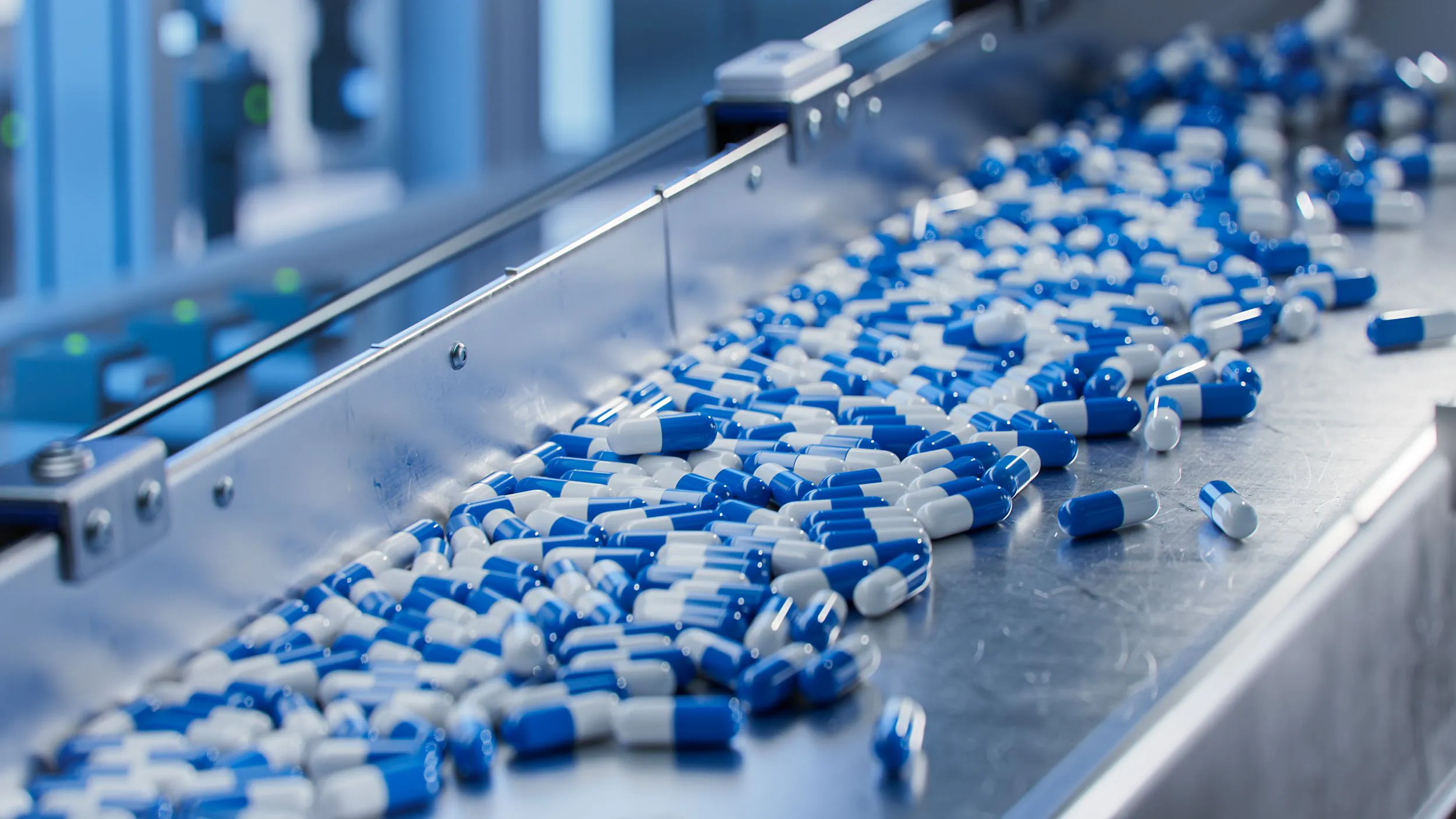The pharmaceutical industry can be slow to adopt new technologies: complex development and manufacturing processes, regulatory compliance, and the fact that small issues have the potential to negatively impact end user health all mean that changes typically need to be carefully planned and tested before being implemented. Quality, consistency, and safety are all key considerations in pharmaceutical manufacturing, and therefore any changes can be expensive and time-consuming.
The onset of the COVID-19 pandemic accelerated the adoption of new technology in the pharmaceutical industry, however. A sudden dramatic increase in demand for healthcare and pharmaceutical products combined with the challenges of maintaining operations in the face of supply chain disruptions, physical distancing, and staffing shortages all drove the need to improve operational efficiencies and manufacturing methods. Automation and other Industry 4.0 technologies helped keep production going despite these setbacks, and remain useful tools now when economies have more or less recovered from the impact of the pandemic.
Even though the influence of the pandemic has eased, automation and other new technologies are still important tools for the pharmaceutical industry. With the combined impact of continued worker shortages, supply chain disruptions, and high inflation, agility and efficiency remain at least as important now as during the height of the pandemic. The average cost for a drug to enter the market in 2022 was $2 billion, and technology upgrades can help reduce this total to make product development more profitable.
The Power of Automation
A customized automation setup can make a significant improvement to pharmaceutical manufacturing operations. Different products and factory layouts call for different setups, and a custom design can reduce waste, eliminate bottlenecks, and improve worker safety. Automation reduces the risk of human error and provide speed and consistency that human’s aren’t capable of producing. It also cuts down on worker exposure to dangerous substances and processes. Finally, by reducing human presence in a sterile production space, the risk of introducing microorganisms from other environments likewise falls.
3D Printing Pharmaceuticals
The pharmaceutical industry has been working with 3D printing technology for several years now. In 2015, the US FDA approved the first medicine that had been created using it. Because the machinery is capable of being very precise, it can create a pill with a higher drug load, and in the case of levetiracetam was of great benefit to people suffering epileptic seizures. Despite this drug being approved almost a decade ago, 3D printed medicine is still rare. However, the technology has great potential in the future production of medications.
AI in the Pharmaceutical Industry
Artificial intelligence (AI) and machine learning (ML) are valuable aspects of Industry 4.0 and manufacturers have been integrating them into workflows for several years now. There are high volumes of data that can be collected from sources such as machinery, sales, customer sentiment, and much more. AI and ML can organize and analyze that data in order to improve factory processes, predict changes in demand, determine potential new products, and much more.
In the pharmaceutical industry, AI can be useful for both product development and manufacturing. It can analyze data about illnesses as well as medicine composition and effectiveness in order to better evaluate the effectiveness of various ingredients and treatments in different situations, helping manufacturers to create the best product for a given need. By simulating real-world tests, AI and ML tools can catch flaws in a product design before it undergoes expensive tests and studies, saving money during the development process.
AI is also used for quality control, both of medications and of the machinery and equipment that produce them. Sensors combined with AI tools can analyze products faster and in greater detail than humans are able to, and they make fewer errors. This not only improves efficiency by working faster and producing less waste in the form of defects, but also results in safer end products.
Using Machine Learning to Streamline Active Ingredient Production
When creating pills and tablets, the active pharmaceutical ingredient must be isolated from a suspension and dried. It requires a human to operate the equipment and to determine when the compound is properly mixed and dried. This involves stopping the machinery and taking samples to be tested, which is a time-consuming and subjective process.
However, a collaboration between MIT and Takeda is using physics and ML in order to make the process less subjective and more efficient. Researchers used a laser to illuminate particles in the suspension during the filtering process, and measure particle size distribution to determine when the compound is ready. By using physics-derived equations, the ML algorithm can be trained much more quickly and accurately than by using other data such as videos. This method doesn’t need to stop and restart the process in order to work, thereby making production faster and more efficient, as well as more accurate by not relying on human subjectivity.
This technology is still being developed and refined, but once completed, may have applications in other industrial pharmaceutical processes beyond just active ingredient production.



